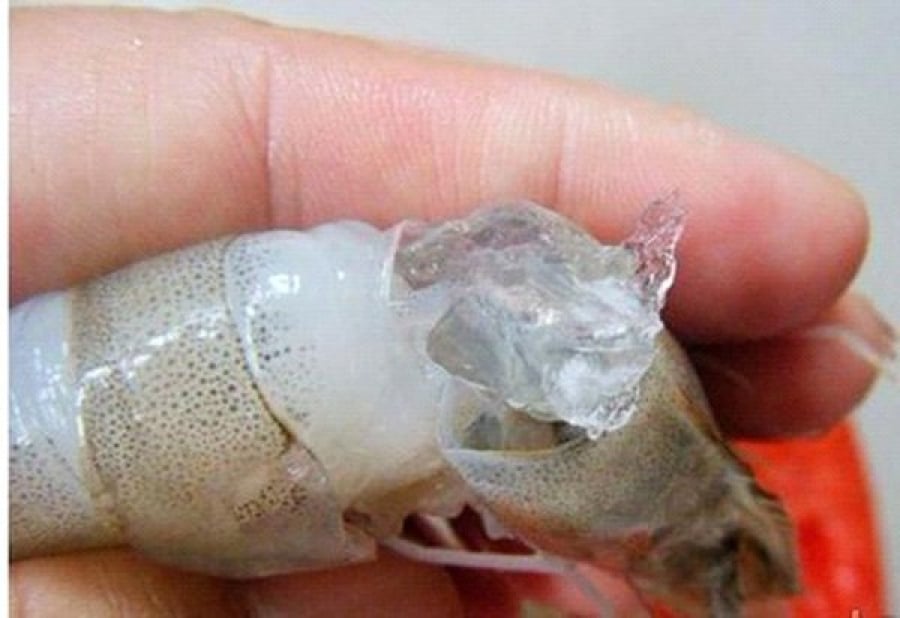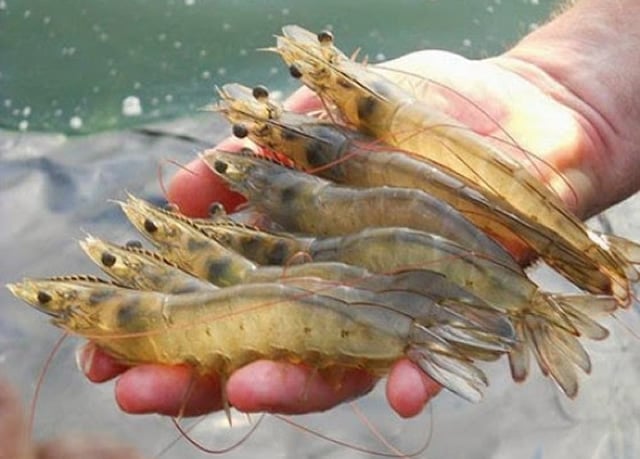Shrimp is a popular and beloved delicacy, but it is also susceptible to adulteration through the injection of foreign substances to increase weight and prolong freshness. Common fillers include agar, starch, or even diluted ground shrimp. This practice not only compromises the quality of the seafood but also poses direct health risks to consumers.
Consuming adulterated shrimp over an extended period can lead to digestive issues, food poisoning, and diarrhea. More severely, it can result in the accumulation of toxins in the body, increasing the risk of chronic illnesses.
Signs of Adulterated Shrimp

Adulterated shrimp exhibits distinct characteristics that set it apart from natural, fresh shrimp. A keen eye can discern differences in their appearance, texture, and behavior during preparation.
Typically, fresh shrimp has a natural curved body, firm flesh, and transparent shell. In contrast, adulterated shrimp often presents with a rigid, abnormally straightened, and distended body, particularly at the joints connecting the head and body. The gills of filled shrimp appear bloated, stiff, and devoid of their natural suppleness. When cooked, these shrimp tend to release excess water, causing the meat to shrink and become brittle, losing its natural sweetness and elasticity. Upon peeling, one may easily notice the presence of agar or other fillers, especially around the head and under the gills.
Selecting the Best Fresh Shrimp
Choosing high-quality, fresh shrimp not only ensures a delicious meal but also safeguards your health. Whenever possible, opt for live shrimp that is actively swimming and jumping in water. Healthy shrimp typically have shiny shells, free from discoloration or unusual markings.
If purchasing frozen or pre-cooked shrimp, carefully examine the head and body. Fresh shrimp will have a head firmly attached to the body, not loose or easily detachable. Additionally, inspect the joints along the shrimp’s shell; tightly connected joints indicate freshness. Conversely, if the joints are loose and appear disjointed, the shrimp may have been injected with fillers or are past their prime.

Prolonging Shrimp Freshness
To maintain the freshness of shrimp over an extended period, it is advisable to clean and dry them before storage. A useful tip is to lightly dust the shrimp with granulated sugar prior to packaging and freezing. This helps prevent the heads from turning black and keeps the shrimp from clumping together. When needed, you can easily separate and use individual shrimp without compromising their quality.
For optimal nutrition and taste, shrimp should be consumed within 30 days of freezing. Prolonged storage may lead to a decline in meat quality and affect the flavor of your dishes.
With these tips in mind, you can confidently select fresh, delicious shrimp, steer clear of adulterated products, and ensure safe and nutritious meals for your family.
The Ultimate Guide to Telling Farmed and Wild Shrimp Apart: Insider Tips and Tricks
“For many, distinguishing between farmed and wild-caught shrimp can be a tricky endeavor. The subtle differences in appearance can be deceiving, often leading to confusion. However, it is important to note that there are significant disparities in terms of quality and nutritional value between the two sources, which is why understanding the distinction is crucial for consumers.”



































